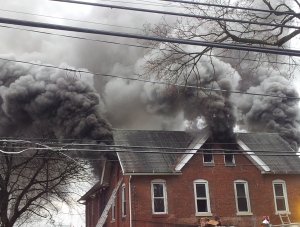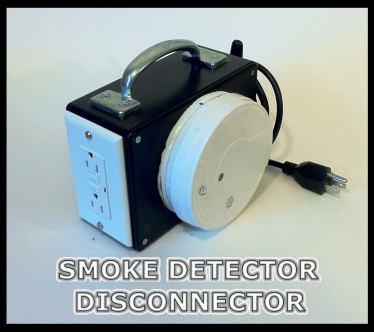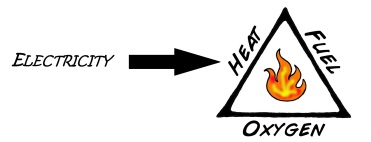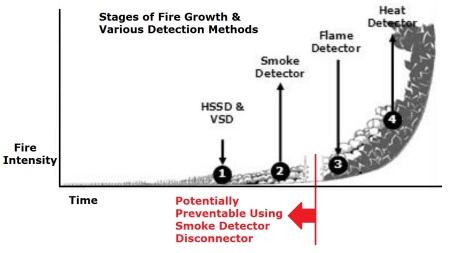Everybody makes mistakes. Most of the time we can easily repair the damage, learn from the mistake, and move on knowing we are better off for the experience. But sometimes the stars align and one little oversight results in irreparable damage and a catastrophic meltdown of your life as you know it. This is a story about one of those times.
I’ve loved designing and building things my whole life. Only a decade ago I was developing my technical skills with a pile of rusty old tools in my mom’s dusty basement, err, secret laboratory. Being allergic to dust I thought it would be useful to rig up a dust filter with a fan in front it. (Yes, I’m aware that you can buy this exact product almost anywhere, but where is the fun in doing that?) My prototype air cleaner did a decent job anyway, so I thought I’d leave it running all day while I went to school. In hindsight that wasn’t such a great idea.
I was the first to arrive home on the scene that afternoon. The day hadn’t been anything special until I opened my front door and released a solid block of black smoke the exact dimensions of the doorway. Holy smoking shit! At the time I didn’t own a cell phone, so my next best option was to run to the center of the street and scream for help in every direction. Wouldn’t you know it, there’s not many people around to notice that sort of thing at 3pm on a weekday.
This is not my actual house, this is just a tribute.
Eventually we got the fire department out there and they took care of business. They concluded that an appliance had somehow malfunctioned in the basement. I knew that some dummy’s electric fan had vibrated from its mount & had been prevented from turning, causing it to overheat and gradually start the fire.
We were actually lucky. The only reason the house didn’t burn down to the ground was because it was sealed up so well. Most of the volume of the house had filled with black smoke which choked out the oxygen and prevented a flashover.
The fire destroyed the entire basement and left everything on the other floors saturated with a layer of black residue. (A coating which could not be removed without chemical treatment and physical scrubbing.) No people got hurt, but my dog Spot didn’t make it. (Damn clever name though eh?) At the end of the day my remaining possessions consisted of the clothes on my back and a mountain of guilt.
I bet you can guess how I feel about dogs.
House fires are a more common problem than you might think. In 2013 there were nearly half a million structure fires in the U.S., which cost a total of $9.5 billion in property damage, 14,000 injuries, and about 3,000 deaths. (No record of dog fatalities at this time.) To put those numbers into perspective, that’s five Titanic’s worth of dead or injured people and fifty-four Titanic’s worth of property damage just from house fires in the U.S., in one year.
Cruise ships are my favorite unit of measurement.
Now for the good part of the story: I’ve improved my electrical engineering skills a bit since high school and I’ve come up with a fire prevention device I’m calling The Smoke Detector Disconnector.
If it detects smoke, it shuts power off to your device!
Think of it as a smart extension cord that reduces the chance of anything plugged into it harming a person or starting a fire.
It uses an off the shelf photoelectric smoke alarm which is the best type for detecting smoldering fires caused by electric appliances overheating. It also has a GFCI, the standard bathroom safety device that prevents hairdryers & bodies of water from partying too hard.
Of course it can’t prevent all types of fires. Shutting off the power to your curling iron won’t help if your séance candles have summoned a fire demon from your curtains. Or if your neighbors decide to throw you a Molotov cocktail party.
But if you forget to turn off your soldering iron, hot glue gun, space heater, or diy air cleaner, then this device gives you a fighting chance to prevent disaster.
Here’s how it works: The ingredients needed to maintain fire are heat, fuel, and oxygen. Electrical fires start by providing heat until a smolder eventually grows into an open flame. If you shut off the heat source soon enough, you can prevent the fire from becoming self-sustaining.
Even if the fire is beyond the point of no return, cutting the power is still useful. Electrical fires are particularly dangerous and have to be fought with a special type of fire extinguisher. Killing the power allows you to fight the fire with anything, including a bucket of water.
So does it work? See for yourself!
Making mistakes is part of the learning process and fear of disaster shouldn’t deter you from experimenting in the garage. Suffering a house fire as the result of an experiment gone awry is a black swan event, however, the Smoke Detector Disconnector is a cheap and effective form of preventative insurance.
Kids that make stuff should have one of these. Since makers like to build stuff themselves anyway I thought they would be best served if I released a set of open source build instructions on Instructables.
So what are you waiting for, go build one!
Update 7-24-15: I won first price in the ‘Home Automation Contest’, thanks everybody!






Reblogged this on The Arts Mechanical and commented:
This looks like a VERY good idea.
LikeLiked by 1 person
“Cruise ships are my favorite unit of measurement.” Personally, I prefer airliners. Morbid… yet so accurate.
Great article!
LikeLiked by 1 person
[…] I don’t own any digital data older than 2007. Why? Well I wasn’t very careful with my toys in high school. […]
LikeLike
This is an excellent idea, and one that every hackerspace needs!
LikeLiked by 1 person
Thanks!
LikeLike
sorry about your doggo 😦
LikeLike